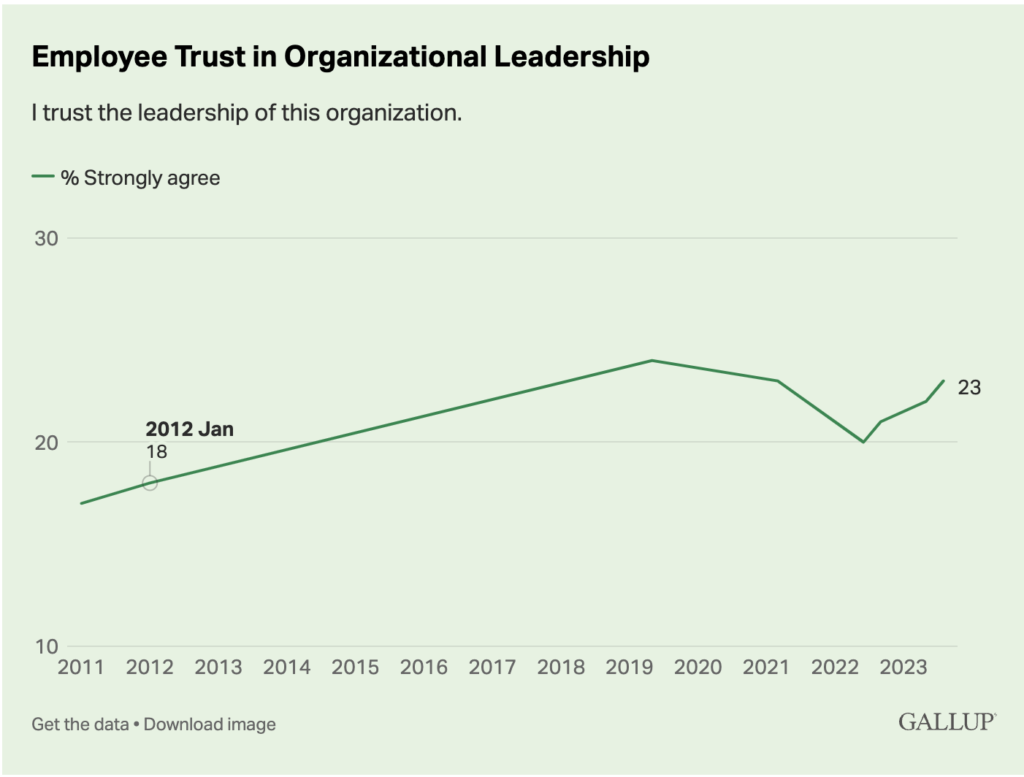In the shadowy corners of workplaces everywhere, employees are discreetly Googling “What is Quiet Firing?” Quiet Firing is a term that has gained traction in workplace discussions alongside its stealthy companion, Quiet Quitting.
Quiet Firing, or silent firing, is a subtle practice where employers discretely encourage employees to resign. Unsuprisingly, this trend of subtly disengaging employees until they finally quit is doing a number on employee engagement and company culture.
In this post, we’ll talk about the nuances of Quiet Firing, exploring its signs, consequences, and the ethical considerations it raises in the workplace.
Boost your team’s efficiency with Hubstaff's productivity tools
What is Quiet Firing?
Quiet Firing is a workplace phenomenon where an employer subtly encourages employees to resign rather than outright firing them. This can be done by:
- Gradually reducing the employee’s responsibilities
- Providing little to no feedback or support
- Intentionally excluding the employee from meetings
- Generally creating an unwelcoming or unengaging work environment.
- Providing insufficient coaching, support, or career development opportunities
Whether intentional or inadvertent, Quiet Firing nudges employees towards leaving the organization due to lack of support.
When done on purpose, the goal of Quiet Firing is often to avoid the legal, financial, and reputational costs associated with firing an employee directly.
We’ll delve into this in more detail later, but spoiler alert: Quiet Firing doesn’t do wonders for your overall productivity and employee engagement.

Another widespread issue in today’s workplaces is the presence of kind, well-meaning individuals who, unfortunately, are ineffective as managers. Let’s talk about it.
Mistakes managers make that lead to Quiet Firing
Some Quiet Firing is deliberately deceitful, but often, it can result from unintentional or misguided management practices.
These managers are not overtly harmful or intentionally damaging. They usually genuinely care about their employees’ well-being. Still, their impact damages their direct reports and, more broadly, company success.
Here are some common mistakes managers make that may inadvertently encourage employees to leave the company and how they manifest as Quiet Firing tactics. We’ll follow up on each mistake with relevant statistics and the potential impact.
Withholding resources or training opportunities
Managers may neglect to provide necessary resources, tools, or training to specific employees, which hampers their ability to perform well or progress in their roles. Managers who fail to train and develop their team members are far more likely to seek employment elsewhere.
What’s the impact?
This mistake can lead to frustration and stagnation for affected employees. It can also create disparities in team skill levels, decreasing overall team effectiveness and morale.
According to a 2019 LinkedIn study, 94% of employees said they would stay with their employer if it invested in their development.
Denying promotions or raises
By systematically denying promotions or raises to an employee despite their qualifications and performance, managers can demotivate and signal to employees that their career prospects within the company are limited.
What’s the impact?
A lack of pay increase affects the targeted individual by stifling their career development and financial well-being. It can also send a negative message to other team members about their prospects, potentially leading to broader disengagement.
Nearly one in 10 (9%) employees leave their jobs because of money.
Assigning undesirable tasks or increased workload
When managers consistently assign particularly challenging, menial, or undesirable tasks to specific employees, it can be a tactic to push them toward resignation.
What’s the impact?
Overworking can lead to burnout and resentment, not just in the affected employee but across their team. When you unreasonably increase an employee’s workload, colleagues may perceive an unfair distribution of work or need to scramble to cover work outside of their job descriptions, too. Poor work-life balance has impacts that directly impact employee health and happiness.
According to a recent survey from the Pew Research Center, nearly half of all U.S. employees already fail to use all their allotted vacation days. The reasons they mention include having too much to do and concern about falling behind at work.
Offering no feedback or direction
Lack of communication about performance or a lack of direction can leave employees feeling unsupported and unsure about how to succeed in their roles.

What’s the impact?
An absence of guidance can severely impact an employee’s ability to perform and grow, potentially leading to decreased job satisfaction and employee engagement.
In APA’s 2023 Work in America workforce survey, 91% of respondents say having a job where they consistently have learning opportunities is essential. Without feedback, employees lack critical learning moments and opportunities for growth.
Isolating the employee from colleagues or projects
Managers might isolate employees by excluding them from team meetings, team projects, or informal networks within the workplace. Only including certain employees in important meetings and communication can lead to miscommunications and low employee morale.
What’s the impact?
When managers fail to facilitate team collaboration, it affects the individual’s ability to contribute effectively and harms their relationships with colleagues. This can lead to alienation and decreased job satisfaction.
Microsoft has found businesses that provide bonuses and promotions for internal relationship-building activities also have employees with higher job satisfaction and happiness levels.
These management missteps contribute to a culture of Quiet Firing, with profound impacts on employee morale and retention. Understanding and addressing these issues can help prevent this unethical practice and foster a more positive and productive workplace environment.
The downside of Quiet Firing
Although this practice might be prevalent in today’s workplaces, it does not exemplify good leadership, productivity, or ethical behavior.
At a minimum, it damages your organization’s reputation as a desirable workplace, undermines trust within teams, and could negatively impact customer satisfaction as critical employees depart.
Quiet Firing practices can:
- Increase turnover: The most apparent (and occasionally intentional) repercussion of Quiet Firing is high turnover rates. Once an employee is Quiet Fired, their role needs to be filled — often at a higher cost. Turnover costs can cost employers 33% of an employee’s annual salary.
- Harm employee engagement: Employees are less engaged in their work when not being challenged and given development opportunities. Less than one-third of employees report they are engaged, so employers can’t afford to damage their already fragile team engagement.
- Knowledge and skill loss: Another risk of turnover and Quiet Firing is knowledge loss. When employers quietly fire employees, organizations can lose valuable skills and institutional knowledge that are difficult to replace.
- Impact profits: Employee engagement decreasing can directly impact company profits. Engaged teams are 21% more profitable than those with low engagement.

- Damage employee trust: When you quiet fire members of your team, other employees will catch on to the trend and distrust management. Employees who strongly agree they trust their organization’s leadership are four times more likely to be engaged, so don’t erode that trust!
- Damage to employer’s reputation: If word spreads that an employee was quietly fired, it can harm the company’s reputation as a fair employer, potentially affecting the ability to attract top talent.
Quiet Firing can lead to a cascade of adverse outcomes. For a company to thrive, it’s crucial to maintain a transparent, supportive, and fair workplace.
Addressing the root causes of Quiet Firing and fostering a culture of open communication and genuine support for employee growth can mitigate these risks, enhancing employee satisfaction and organizational success.
So, let’s discuss how businesses can avoid Quiet Firing and its consequences.
How to avoid Quiet Firing?
To avoid the harmful practice of Quiet Firing, managers can take proactive steps to foster a supportive and communicative workplace environment.
Here are three actionable steps:
Step 1: Foster open communication
Establish regular one-on-one meetings with each team member to discuss their career goals, project feedback, and any workplace concerns.
This open line of communication helps understand each employee’s aspirations and challenges and makes them feel valued and heard. Encourage an environment where feedback flows both ways, allowing employees to express concerns without fear of retribution.

Step 2: Set clear expectations and communicate openly
Clearly define the roles and responsibilities of each team member and ensure that these expectations are communicated effectively. Regular feedback sessions are crucial, not just annually, but as part of a continuous improvement process.
Constructive feedback helps employees grow and improve, reducing misunderstandings about performance and preventing feelings of neglect or unfair treatment.
Step 3: Invest in employee development and growth
Actively work on developing the skillsets of your employees. You can achieve this by providing:
- Training programs
- Mentorship
- Challenging and meaningful work
- Advancement opportunities.
When employees see a clear path for growth and feel supported in their career goals, they are more likely to be engaged and committed to the organization.
By implementing these steps, managers can create a positive work culture that minimizes the risk of Quiet Firing and promotes a healthy, productive workplace environment.
Quiet Firing vs. Quiet Quitting: Understanding the difference
Quiet Firing and Quiet Quitting are two sides of the same coin, each representing a different passive approach to dissatisfaction in the workplace but from opposite perspectives: the employer and the employee.
“Quiet Quitters” make up at least 50% of the U.S. workforce — and probably more, according to Gallup.
- Quiet Firing occurs when managers create a work environment that subtly pushes an employee to leave voluntarily.
- Quiet Quitting happens when employees disengage from their work and only do the bare minimum. They might still perform their essential duties but cease to go above and beyond, doing just enough to meet their job descriptions.
Both Quiet Firing and Quiet Quitting highlight a breakdown in the fundamental relationship between employer and employee. They serve as a wake-up call for organizations to foster better communication, set clear expectations, and genuinely invest in employee development.
In fact, Quiet Quitting can be a direct response to the Quiet Firing of other team members. Employees will begin to think, “Can Quiet Firing happen to me if it happened to Becky in Accounting?”
Addressing these issues proactively can help prevent both phenomena, leading to a more engaged, productive, and satisfied workforce.
Companies must take active steps to cultivate a transparent and supportive workplace culture that encourages both parties to address and resolve issues openly.
Most popular
The Fundamentals of Employee Goal Setting
Employee goal setting is crucial for reaching broader business goals, but a lot of us struggle to know where to start. American...
Data-Driven Productivity with Hubstaff Insights: Webinar Recap
In our recent webinar, the product team provided a deep overview of the Hubstaff Insights add-on, a powerful productivity measurem...
The Critical Role of Employee Monitoring and Workplace Security
Why do we need employee monitoring and workplace security? Companies had to adapt fast when the world shifted to remote work...
15 Ways to Use AI in the Workforce
Whether through AI-powered project management, strategic planning, or simply automating simple admin work, we’ve seen a dramatic...




